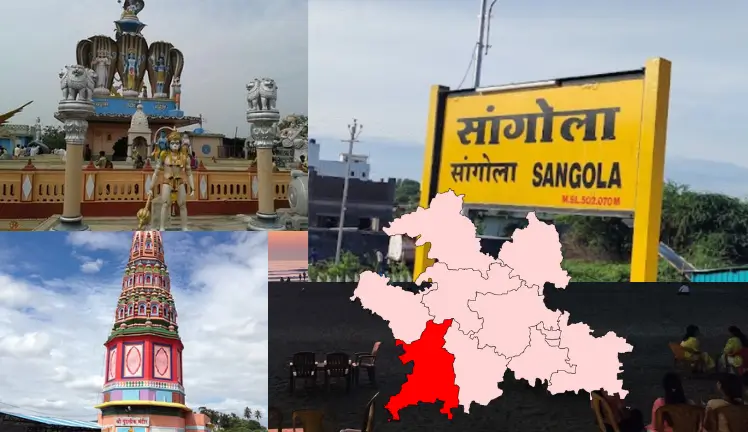A Quiet Flame: Introduction to Sangola Maharashtra
In the grand map of Maharashtra, Sangola might not roar like Mumbai or buzz like Pune, but it simmers with quiet strength. It’s a town that breathes through its farms, speaks through its marketplaces, and holds its own with a spirit that’s weathered both drought and development. This is Sangola — not just a town, but a way of rural life.

Pin on the Map: Location & Access
Sangola is located in the Solapur district of southern Maharashtra, nestled between open plains and fertile belts. While it may seem like a simple rural stop, its connectivity is anything but modest.
- By Road: Well-connected via State Highways, especially SH-161
- By Rail: Sangola Railway Station links it to Pandharpur, Solapur, Miraj, and Kolhapur
- Nearest Cities: Solapur (110 km), Pandharpur (45 km), Pune (230 km)
Its central location makes it a trade route for agricultural goods and seasonal produce.
A Town Built on Soil & Spirit
Sangola’s identity is deeply tied to its agrarian legacy. It has faced tough times, particularly during water shortages and droughts, yet the people here remain resilient. You’ll find hardworking farmers, entrepreneurial traders, and a younger generation balancing tradition with modern education.
The townscape itself is a mix — old wadas and temples standing next to newly built coaching centers and digital seva kendras. Sangola is growing — not rapidly, but thoughtfully.
Marketplaces & Mandis: The Trading Culture
Every town has a heart, and in Sangola, it beats strongest in its weekly markets and agricultural mandis. These places aren’t just for trade — they’re for stories, debates, bargains, and community bonding.
- Grain and Cotton Mandis: Seasonal crops from neighboring villages pour in
- Lime & Pomegranate Trade: Sangola is a growing hub for fruit farming
- Cattle Markets: Still active in select areas during fairs and local events
These bustling corners make Sangola a vital economic engine in the region.
Climate & Crops: Farming in Focus
With its semi-arid climate, Sangola’s farmers have mastered dryland agriculture. The town may not get monsoon riches like Konkan, but it produces robust crops through innovation.
- Major Crops: Jowar (sorghum), Bajra (pearl millet), Cotton, Groundnut
- Emerging Trend: Pomegranate farming under drip irrigation
- Water Management: Local tanks, check dams, and farm ponds have improved resilience
This town has turned its climate into a challenge, not a curse — adapting with every cycle.
- Read Also:
- Rajouri Garden: A Pulse of Delhi
Life in Motion: Culture, Festivals & People
Despite being agriculturally driven, Sangola’s social life is colorful and communal.
- Festivals like Makar Sankranti, Pola, and Ganesh Utsav are celebrated with local flavors
- Bhajan and Kirtan groups echo through temples during spiritual months
- Wrestling (Kusti) is still a much-loved sport in rural akhadas
- New-age touches? Yes. WhatsApp groups, college tuitions, and online vegetable markets are popping up fast.
Sangola may be rural, but it’s not out of sync with the times.
In Closing: Sangola is Grit in the Form of a Town
Sangola isn’t touristy. It doesn’t have beaches or hill stations. But it does have backbone, heritage, and hustle. It’s the kind of place that grows slowly but deeply — in soil, in spirit, and in the lives of the people who call it home.
If you’re ever looking to understand real Maharashtra, skip the brochures and visit Sangola instead. It speaks softly, but it speaks truth.